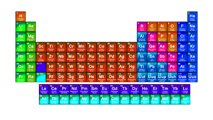Summary
 The goal of Analog Electronics and Basic Instrument Design is to provide students with a sufficient understanding of the principles, laws, and theories of basic analog electronics to partially eliminate the mystery of the internal workings of the chemical instrumention ubiquitous in the laboratory. Participants in this course will gain the competence to read schematic diagrams of electronic circuits, assemble the circuit on a design breadboard, characterize and modify the operating circuit using standard test equipment available to the electronics technician, troubleshoot non-working circuits, and design and build their own simple but useful working circuits.
The goal of Analog Electronics and Basic Instrument Design is to provide students with a sufficient understanding of the principles, laws, and theories of basic analog electronics to partially eliminate the mystery of the internal workings of the chemical instrumention ubiquitous in the laboratory. Participants in this course will gain the competence to read schematic diagrams of electronic circuits, assemble the circuit on a design breadboard, characterize and modify the operating circuit using standard test equipment available to the electronics technician, troubleshoot non-working circuits, and design and build their own simple but useful working circuits.
In addition to these goals, the specific goals are that every participant will…
...understand the design charactistics of and be able to build practical passive and active analog circuits including, at least, resistor/capacitor/inductor networks, transistor and operational amplifier filters and amplifiers, and timer/waveform generators.
...
recognize and appreciate the technical challenges faced by instrument designers.
...be able to use properly the common electronic test equipment.
...
learn the basic steps in troubleshooting a nonfunctioning circuit or instrument.
...
understand that the success of any of any design may depend upon team of technicians working together to solve the problem.
...
have a basic operational knowledge of analog electronics which transcends the quick rate of obsolescence of specific electronic components.
This course is calls upon skills and information learned in earlier courses, such as Quantitative Chemistry, Instrumental Analysis, and Physics. Although not a requirement, completion of Instrumental Analysis (Chem 341) is of benefit to participants in this course.

